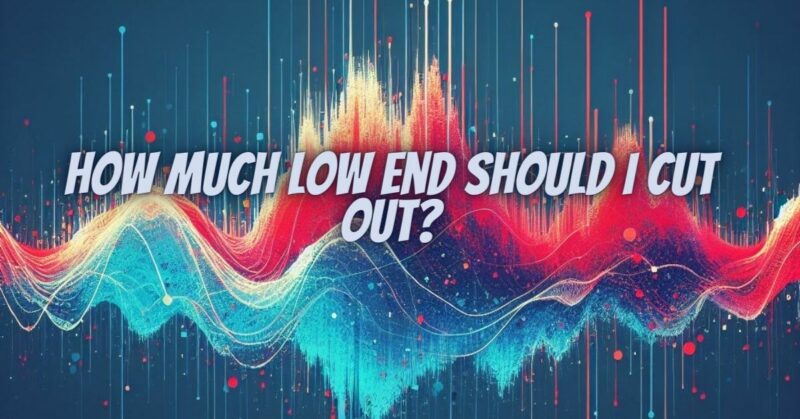How much low end you should cut out depends on a number of factors, including the following:
- The type of music you are playing: Different genres of music typically have different requirements for low end. For example, rock and metal music typically requires more low end than folk or classical music.
- The mix environment: If you are mixing for a live performance, you may want to cut more low end to avoid feedback and muddiness. If you are mixing for a studio recording, you may want to cut less low end to get a fuller and more powerful sound.
- The other instruments in the mix: You need to consider the other instruments in the mix when cutting low end. For example, if you are mixing a rock song with a bass guitar, you may want to cut more low end on the guitar to avoid conflicting with the bass.
- Your personal preference: Ultimately, the best way to decide how much low end to cut is to experiment and see what sounds good to you.
Here are some general guidelines for cutting low end:
- Start by cutting anything below 80Hz. This will remove any unwanted rumble and mud from your sound.
- Cut more low end if you are playing in a band with a lot of other instruments. This will help your instrument to sit better in the mix.
- Cut more low end if you are mixing for a live performance. This will help to avoid feedback and muddiness.
- Cut less low end if you are mixing for a studio recording. This will help to get a fuller and more powerful sound.
You can use an EQ filter to cut low end. An EQ filter is a tool that allows you to boost or cut specific frequencies in your sound. To cut low end, simply set the EQ filter to a frequency below 80Hz and then cut the gain.
Here are some additional tips for cutting low end:
- Use a high-pass filter. A high-pass filter is an EQ filter that cuts out all frequencies below a certain point. This is a great way to remove unwanted rumble and mud from your sound.
- Use a compressor. A compressor can help to even out the levels of your signal, which can make your instrument sound louder and more punchy.
- Use an EQ pedal. An EQ pedal can give you more precise control over the frequencies in your sound. This can be useful for cutting specific frequencies, such as the low mids or the low end.
By following these tips, you can cut the right amount of low end from your sound and get a mix that sounds both powerful and clear.


